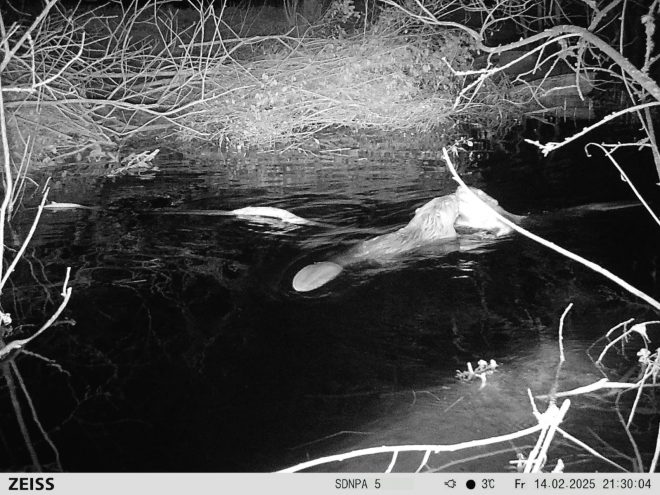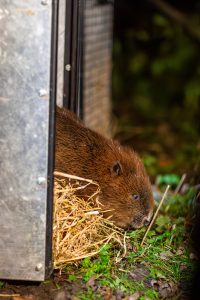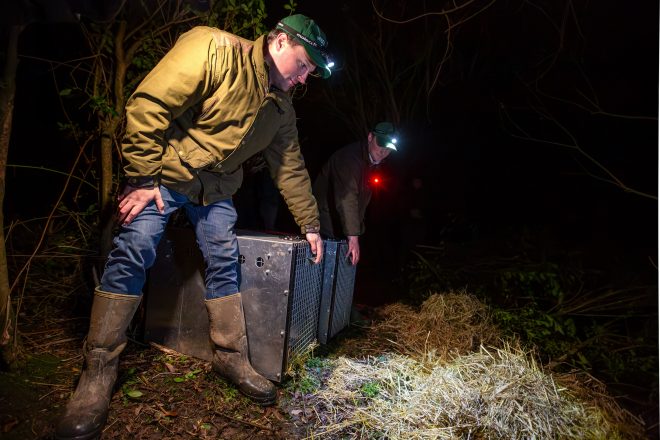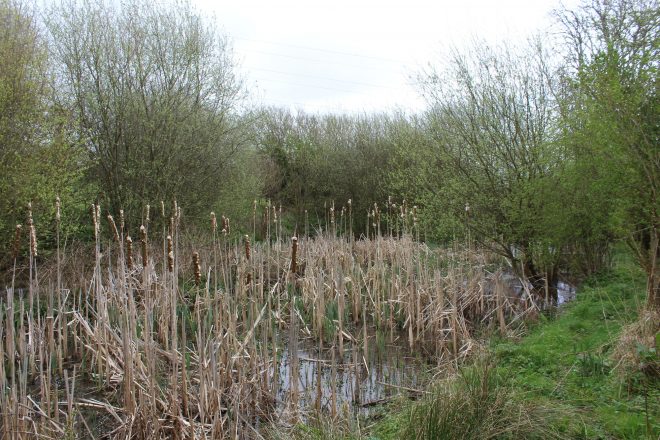Beavers set to bring biodiversity boost to South Downs wetland
March 12, 2025

A pair of beavers have been reintroduced to a South Downs stream to help restore waterways and create a flourishing wildlife haven.
Europe’s largest rodent, known as an “ecosystem engineer” for its remarkable ability to increase biodiversity, would once have been widespread across the UK but was hunted to extinction around 400 years ago.
Now a groundbreaking project, led by Meonside Farm and working with the University of Southampton and the National Park Authority, has reintroduced the charismatic creatures to a rare chalk stream near Petersfield, Hampshire.
 The Beaver Trust has helped to relocate two beavers from Scotland to the contained two-hectare site, where scientists will now study the ecological and geographical changes in the habitat over the coming years. Since the reintroduction in December, the pair are progressing well at the site and are being monitored by a wildlife cam.
The Beaver Trust has helped to relocate two beavers from Scotland to the contained two-hectare site, where scientists will now study the ecological and geographical changes in the habitat over the coming years. Since the reintroduction in December, the pair are progressing well at the site and are being monitored by a wildlife cam.
The planting-eating mammal is a keystone species and one of nature’s most incredible ecological engineers. Through building dams, digging canals, and creating dead wood, “busy” beavers help maintain habitats where a large diversity of life can thrive, including many mammal, bird, fish, amphibian and insect species.
Beavers also improve river health by preventing soil from surrounding fields being washed out to sea. With the trapping of carbon and nutrients, water quality is improved downstream and flooding can potentially be reduced.
Farmer Will Atkinson, who is leading the reintroduction, said: “This project is a great example of how landowners and farmers who work so hard to produce the nation’s food can also contribute to species recovery whilst protecting our precious watercourses.”
The University of Southampton’s School of Geography and Environmental Science, supported by funding from the Sustainability Research Institute (SRI), are carrying out research into how the habitat, ecology and hydrology change over time as beavers modify the river and floodplain.

The scientists will be sampling “Environmental DNA” – or eDNA – to build up an accurate picture of all forms of life on the site. All animals and plants leave some form of DNA imprint on an environment – whether it be a hair, saliva, mucus, skin fragment or a seed, for example. With new sophisticated DNA sequencing technology, researchers can now build up a profile of every species in a habitat simply by taking a small water or soil sample, rather than just relying on surveys by sight.
As well as the DNA sampling, the university’s team will be conducting detailed topographical surveys and testing changes in water flow and quality.
The research will help inform other reintroduction programmes of the beaver across Europe and better understand how to increase biodiversity.
The University’s Professor David Sear, who leads the research programme, said: “We are delighted the University is involved in this partnership. It is an important part of our civic and regional role to use our internationally excellent scientific capacity to support such initiatives.
“We are only just learning the role beavers played in the evolution of our rivers. We’re looking forward to understanding more about just how these animals transform chalk streams and to sharing that knowledge with other restoration practitioners and landowners.”
Working with the National Park’s Western Ranger team, fencing has been installed to create a perimeter enclosure around the site, which also contains an old duck pond and vegetation. The type of fencing is specifically engineered to keep beavers in.
Extensive consultation has taken place with the local community, with widespread support for the project. There will be opportunities for volunteers to get involved with various activities, including regular fence checks, habitat monitoring and photography.

Jan Knowlson, Biodiversity Officer for the National Park, said: “Beavers are an amazing animal that were once an integral part of British wildlife and it’s wonderful to see a family setting up home in the South Downs National Park, where boosting biodiversity is one of our primary objectives.
“We’re looking forward to seeing how this project progresses and what changes are seen in the habitat. Beavers have not lived in the South Downs for over 400 years, so we’re taking ‘baby steps’ in terms of any reintroductions and still learning lots about their impact on ecosystems.
“These remarkable rodents are truly ‘busy’ in every sense of the word, literally building the structural diversity in wetlands that creates homes and refuges for so many other animals, such as otters, water shrews, water voles, kingfishers, dragonflies and freshwater fish.
“Water is a key aspect of the National Park’s nature recovery ambitions, so this project dovetails with so much of our wider work around improving and restoring wetlands and increasing awareness about the importance of water.”
The farm’s project has been supported with funding from the South Downs National Park Trust and the Farming in Protected Landscapes (FiPL) programme.
- The beavers near Petersfield have been released into a contained enclosure that will be monitored.
- The Government recently introduced a licensing scheme for beavers to be released into the wild on watercourses. Administered by Natural England, this will involve a rigorous application process involving landowners, farmers, and local communities.
- This is the second reintroduction of the beaver in the South Downs National Park, with a small breeding programme continuing in an enclosure near Black Down, led by The National Trust.
- Thanks to reintroductions, England has a population of about 500 beavers and Scotland has around 1,000.
- Beavers were heavily hunted for their fur and scent glands that produce a substance called castoreum. By the beginning of the 16th century the beaver became extinct from the country.
- A recent scientific study noted 33 per cent more plant species and 26 per cent more beetles in wetlands where beavers live.
- The chalk stream is one of only 200 in the world.
- Beavers are nocturnal, so are most active and visible during dusk and dawn.
- The average lifespan of a beaver is between seven and eight years but they can live up to 25 years.
- Beavers don’t eat fish! They are vegetarian and eat pond weeds, grasses and leaves in summer, and the bark of willows and poplars in winter. Ponds created upstream of beaver dams provide juvenile overwintering and rearing habitat and critical refuge for larger fish. This results in increased fish abundance, condition and growth. In Norway, there are well-established beaver populations (descended entirely from reintroductions) in five of the top ten salmon fishing rivers.
- Learn more about the National Park’s ReNature initiative to create and improve wildlife habitats at southdowns.gov.uk/renature/
